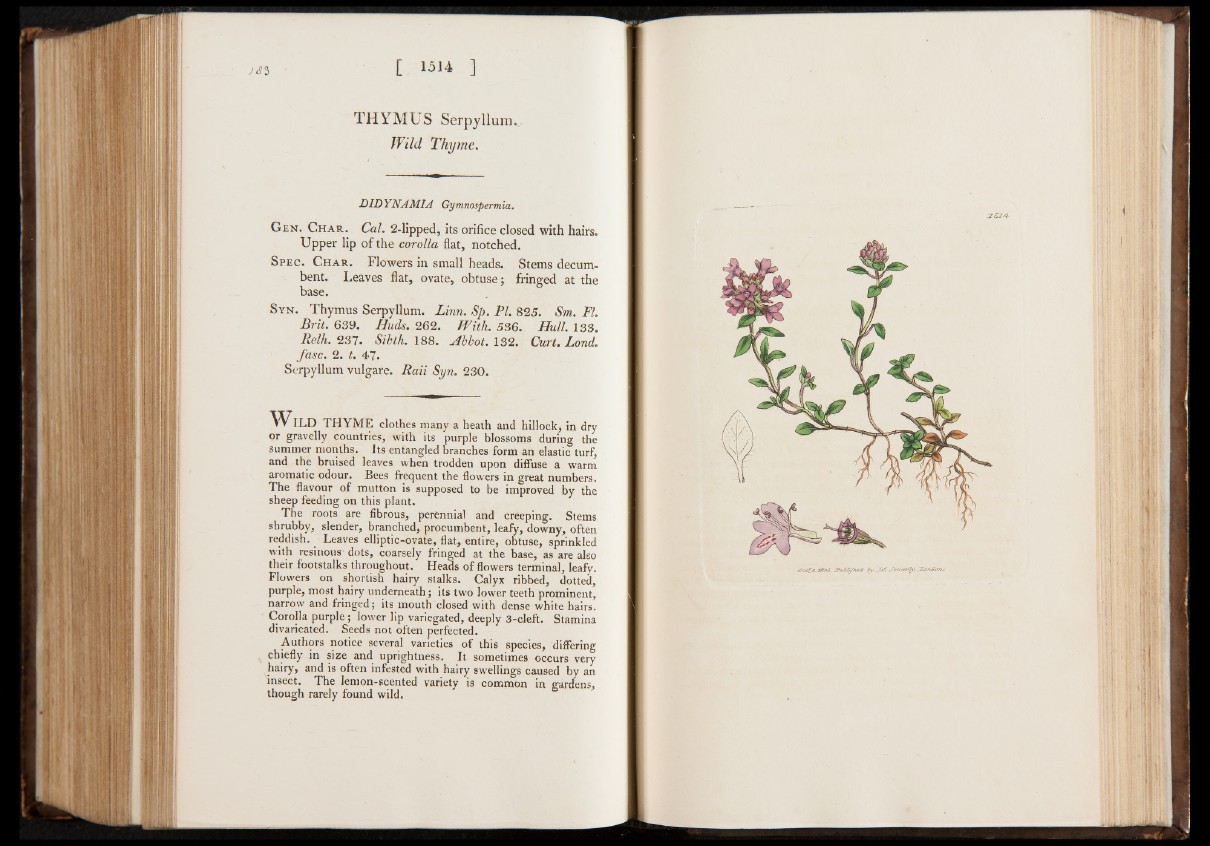
J iS 3 [ 1514 ]
THYMUS Serpylluiru
Wild Thyme.
DID YNAMIA Gymnospermia.
G e n . C h a r . Cal. 2-lipped, its orifice closed with hairs.
Upper lip of the corolla flat, notched.
S p e c . C h a r . Flowers in small heads. Stems decumbent.
Leaves flat, ovate, obtuse; fringed at the
base.
S y n . Thymus Serpyllum. Linn. Sp. Pi. 8 2 5 . Sm. FI.
Brit. 6 3 9 . Buds. 2 6 2 . With. 53 6 . Hull. 1 3 3 .
Belli. 2 3 7 . Sihth. 1 8 8 . Abbot. 1 3 2 . Curt. Lond.
fasc. 2 . t. 4 7 .
Serpyllum vulgare. Rail Syn. 2 3 0 .
W i l d THYME clothes many a heath and hillock, in dry
or gravelly countries, with its purple blossoms during the
summer months. Its entangled branches form an elastic turf,
and the bruised leaves when trodden upon diffuse a warm
aromatic odour. Bees frequent the flowers in great numbers.
The flavour of mutton is supposed to be improved by the
sheep feeding on this plant.
The roots are fibrous, perennial and creeping. Stems
shrubby, slender, branched, procumbent, leafy, downy, often
reddish. Leaves elliptic-ovate, flat, entire, obtuse, sprinkled
with resinous dots, coarsely fringed at the base, as are also
their footstalks throughout. Heads of flowers terminal, leafy.
Flowers on shortish hairy stalks. Calyx ribbed, dotted,
purple, most hairy underneath; its two lower teeth prominent,
narrow and fringed; its mouth closed with dense white hairs.
Corolla purple; lower lip variegated, deeply 3-cleft. Stamina
divaricated. Seeds not often perfected.
Authors notice several varieties of this species, differing
chiefly in size and uprightness. It sometimes Occurs very
hairy, and is often infested with hairy swellings caused by an
insect. The lemon-scented variety is common in gardens,
though rarely found wild.
Ill l